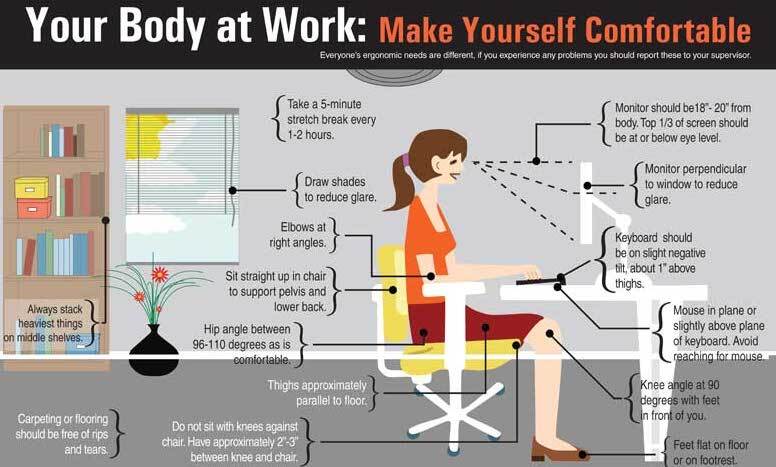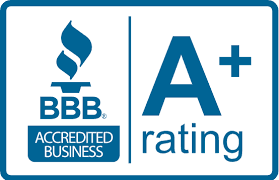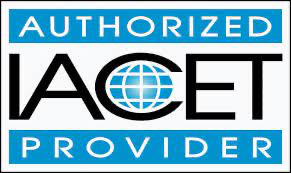ERGONOMICS REVIEW PROGRAM

Identify Problems
- An important part of the ergonomic process is a periodic review of the facility, specific workstation designs and work practices, and the overall production process, from an ergonomics perspective. This includes identifying existing problems, which can be obtained from reviewing your company's OSHA 300 injury and illness logs, 301 reports, workers' compensation records, and worker reports of problems. However, a more forward- looking approach, to be used in combination with reviewing injury and illness records, is to be proactive in identifying potential ergonomic issues that have gone unnoticed or resulted from facility changes, before they result in MSDs.
- Our services include:
- Review Injury Records
- Observe Workplace Conditions
- Identify Risk Factors
- Encourage Early Reporting of Injuries
- Full Comprehensive Written Report, Including Mitigation Plans
- Review Injury Records
- Looking at your injury and illness data will help identify ergonomic problems. These data can be obtained from reviewing the company's OSHA 300 Injury and Illness Logs, 301 reports, workers' compensation records, first aid logs, accident and near-miss investigation reports, insurance company reports and worker reports of problems.
- Observe Workplace Conditions
- By looking critically at your workplace operations, we can identify risk factors and eliminate or control them as early as possible.
- Risk Factors
- The risk of MSD injury depends on work positions and postures, how often the task is performed, the level of required effort and how long the task lasts. Risk factors that may lead to the development of MSDs include:
- Exerting excessive force. Examples include lifting heavy objects or people, pushing or pulling heavy loads, manually pouring materials, or maintaining control of equipment or tools.
- Performing the same or similar tasks repetitively. Performing the same motion or series of motions continually or frequently for an extended period of time.
- Working in awkward postures or being in the same posture for long periods of time. Using positions that place stress on the body, such as prolonged or repetitive reaching above shoulder height, kneeling, squatting, leaning over a counter, using a knife with wrists bent, or twisting the torso while lifting.
- Localized pressure into the body part. Pressing the body or part of the body (such as the hand) against hard or sharp edges, or using the hand as a hammer.
- Cold temperatures. In combination with any one of the above risk factors may also increase the potential for MSDs to develop. For example, many of the operations in meatpacking and poultry processing occur with a chilled product or in a cold environment.
- Vibration, both whole body and hand-arm, can cause a number of health effects. Hand-arm vibration can damage small capillaries that supply nutrients and can make hand tools more difficult to control. Hand-arm vibration may cause a worker to lose feeling in the hands and arms resulting in increased force exertion to control hand-powered tools (e.g. hammer drills, portable grinders, chainsaws) in much the same way gloves limit feeling in the hands. The effects of vibration can damage the body and greatly increase the force which must be exerted for a task.
- Combined exposure to several risk factors. May place workers at a higher risk for MSDs than does exposure to any one risk factor.
- In addition, observe whether workers are:
- Modifying their tools, equipment or work area
- Shaking their arms and hands
- Rolling their shoulders
- Bringing products such as back belts or wrist braces into the workplace
- Encouraging and Utilizing Early Reports of Injury
- Comprehensive injury reporting is important to the success of an ergonomic process. The goal of this effort is to properly assess, diagnose, and treat MSDs. Early reporting, diagnosis, and intervention can limit injury severity, improve the effectiveness of treatment, minimize the likelihood of disability or permanent damage, and reduce workers compensation claims. This will allow the employer to correctly identify work areas or specific tasks where injuries frequently occur or are most severe. This information helps direct the activities of the ergonomic team as well as to guide healthcare providers in making return-to-work and light-duty work decisions. OSHA's injury and illness recording and reporting regulation (29 CFR Part 1904) require employers to record and report work-related fatalities, injuries and illnesses.



